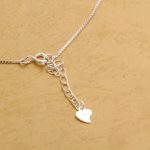Beaded jewelry is a popular and versatile accessory that can elevate any outfit with its unique and intricate designs. However, over time, dirt, oil, and debris can accumulate on the beads, causing them to lose their shine and luster. That’s why knowing how to clean beaded jewelry is essential in order to maintain its beauty and longevity. In this article, we will explore the importance of cleaning beaded jewelry and the benefits of keeping it clean.
Cleaning beaded jewelry regularly not only helps to remove dirt and grime but also ensures that the beads retain their vibrant color and sparkle. By cleaning your beaded jewelry, you are able to restore its original brilliance and make it a statement piece once again. Additionally, dirt or oil buildup on the beads can cause them to wear down or become discolored over time. Proper cleaning techniques can help prevent this damage and extend the lifespan of your beloved pieces.
Furthermore, keeping your beaded jewelry clean is crucial for maintaining good hygiene. Beads often come into contact with our skin, hair products, makeup, sweat, and other environmental factors that can lead to a buildup of bacteria. Regular cleaning helps to eliminate these harmful agents and reduce the risk of skin irritation or infection when wearing your favorite beaded accessories.
Understanding the materials
Beaded jewelry comes in a wide variety of materials, each with their own unique characteristics and properties. Understanding the different types of beads and materials commonly used in beaded jewelry is essential when it comes to cleaning them effectively.
One common type of bead material is glass. Glass beads are popular for their vibrant colors and versatility. When cleaning glass beads, it is important to avoid abrasive cleaners or rough scrubbing as this can scratch the surface of the beads. Instead, opt for gentle cleaning methods such as using a soft cloth or a mild detergent diluted in water.
Another popular material for beads is gemstones, which can include precious stones like diamonds, rubies, and sapphires, as well as semi-precious stones like amethyst, turquoise, and jade. Gemstone beads require extra care during cleaning due to their delicate nature. It is recommended to use a gentle handwashing method with mild soap and lukewarm water. Avoid harsh chemicals or ultrasonic cleaners that can damage these precious stones.
Metal beads are also commonly found in beaded jewelry, including sterling silver, gold-plated, or brass beads. These metal components can tarnish over time due to exposure to air and moisture. To clean metal beads, use a specialized jewelry cleaning solution or a mixture of mild soap and warm water. Gently scrub them with a soft brush or toothbrush before rinsing thoroughly and drying with a clean cloth.
| Bead Material | Cleaning Method |
|---|---|
| Glass | Gentle handwashing with mild detergent |
| Gemstones | Gentle handwashing with mild soap and lukewarm water |
| Metal (Sterling Silver, Gold-plated, Brass) | Specialized jewelry cleaning solution or mixture of mild soap and warm water |
Understanding the materials used in beaded jewelry not only helps in choosing the appropriate cleaning method but also ensures the longevity and beauty of the pieces. It is always recommended to consult with a professional jeweler or read specific care instructions provided by the jewelry designer for any additional guidance on cleaning particular types of beads or materials.
Preparing for cleaning
Inspecting the Jewelry for Damage or Loose Beads
Before undertaking the cleaning process, it is crucial to carefully inspect your beaded jewelry for any signs of damage or loose beads. This step ensures that you can take appropriate measures to prevent further harm during the cleaning process. Here are some steps to follow when inspecting your jewelry:
- Find a well-lit area: Choose a clean and well-lit space where you can thoroughly examine your beaded jewelry. Natural light is ideal, but if that is not possible, use a bright lamp or a magnifying glass to help you see the intricate details.
- Look for any loose beads: Gently shake or tap your jewelry over a soft cloth to check if there are any loose beads. Pay close attention to clasps and connectors as they are common areas where beads may loosen over time.
- Inspect for signs of damage: Carefully examine each bead, metal component, and stringing material for any cracks, chips, scratches, or other forms of damage. Damaged beads or components should be repaired before cleaning to avoid exacerbating the problem.
- Assess the integrity of the stringing material: For strung necklaces or bracelets, check if the stringing material shows any signs of fraying or weakening. If you notice any issues with the stringing material, it’s best to restring it before proceeding with cleaning to prevent breakage.
- Document any significant damages: Take note or make a checklist of any visible damages you find during your inspection. This record will serve as a helpful reference when performing repairs after cleaning.
Preparing a Safe and Suitable Cleaning Area
Creating an appropriate cleaning area is essential in ensuring the safety and effective handling of your beaded jewelry during the cleaning process. Follow these steps to prepare a safe workspace:
- Clear clutter and create space: Clean off a flat surface such as a table or countertop where you can lay out your cleaning materials and jewelry. Clear away any items that could potentially cause damage or get in the way while cleaning.
- Cover the workspace: Protect your work area by laying down a soft cloth or a gentle padding, such as a microfiber towel or velvet fabric. This will prevent any scratches caused by accidental drops or movements during cleaning.
- Gather necessary tools and supplies: Before starting the cleaning process, gather all the supplies you’ll need, including a mild detergent or specialized jewelry cleaner, soft-bristled brush or toothbrush, lint-free cloth, and warm water. Having everything readily available will streamline the process and minimize the risk of damaging your jewelry due to prolonged exposure to cleaning solutions.
- Keep small components secure: Use small bowls or trays to hold beads, findings, clasps, and other tiny components. By keeping them contained in separate containers, you reduce the chances of losing them during the cleaning process.
By thoroughly inspecting your beaded jewelry for any damage or loose beads and carefully preparing a safe and suitable cleaning area, you are taking important steps in ensuring that your precious pieces are handled with care throughout the cleaning process. In the next section, we will discuss choosing the right cleaning method based on different types of beads and materials found in beaded jewelry.
Choosing the right cleaning method
One of the crucial steps in cleaning beaded jewelry is choosing the right cleaning method. Different materials and types of beads require specific approaches to ensure a safe and effective cleaning process. There are several cleaning methods available, including gentle handwashing, using a mild detergent, or utilizing specialized jewelry cleaning solutions. Knowing when to use each method based on the type of beads and materials is essential for maintaining the integrity and beauty of your jewelry.
- Gentle Handwashing: This method is suitable for most types of beaded jewelry, especially those with delicate or porous beads that may not tolerate harsh chemicals or excessive agitation. To clean your jewelry using this method, simply fill a bowl with lukewarm water and add a small amount of mild dish soap or baby shampoo.
Gently swirl your beaded jewelry in the soapy water for a few minutes, paying attention to any areas that might need extra cleaning. Rinse thoroughly with clean water and pat dry with a soft cloth. - Mild Detergent: Some beaded jewelry may require slightly stronger cleaning agents to remove stubborn dirt or oils. A mild detergent can be used in such cases. Mix a small amount of mild detergent with water to create a soapy solution in a bowl.
Place your beaded jewelry in the solution and gently agitate it for a few minutes using your fingers or a soft brush. Be careful not to scrub too vigorously, as this may damage delicate beads or loosen their settings. Rinse thoroughly with clean water after cleaning and allow the jewelry to air dry. - Specialized Jewelry Cleaning Solutions: Certain types of beads, such as gemstones or pearls, require specialized care due to their sensitivity to moisture or chemicals. In these cases, it’s best to utilize specialized jewelry cleaning solutions specifically formulated for these types of beads. Follow the manufacturer’s instructions carefully when using these solutions and avoid exposing your beaded jewelry to excessive moisture or prolonged immersion.
By understanding the different cleaning methods and when to use each one, you can effectively clean your beaded jewelry without causing any damage. Remember to always take into consideration the type of beads and materials used in your jewelry to ensure a safe and successful cleaning process.
Cleaning beaded necklaces
Cleaning beaded necklaces requires special care to ensure that both the beads and the stringing material remain in good condition. Here are some specific tips and techniques to effectively clean your beaded necklaces without causing any damage:
- Inspect for damage: Before cleaning, carefully inspect the necklace for any loose or broken beads. If you notice any issues, address them before proceeding with cleaning. This will help prevent further damage during the cleaning process.
- Choose a suitable method: The choice of cleaning method depends on the type of beads and materials used in your necklace. For beaded necklaces with delicate gemstone beads or pearls, it is best to opt for a gentle handwashing technique. Prepare a bowl of lukewarm water mixed with a mild detergent and use a soft-bristled brush or cloth to clean the beads gently. Rinse with clean water and pat dry.
- Avoid submerging certain materials: Some types of beads, such as wooden or porous materials like lava stone, should not be submerged in water as they may absorb moisture and get damaged. For these kinds of necklaces, use a damp cloth or cotton swab dipped in a mild detergent solution to carefully wipe down each bead individually.
- Handle stringing material with care: Be mindful of the stringing material when cleaning beaded necklaces. Excessive exposure to water can weaken or stretch the thread/strand over time. To avoid this, minimize the amount of water that comes into contact with the stringing material by focusing on cleaning the beads themselves.
- Dry properly: After cleaning, make sure to dry your beaded necklace thoroughly before storing it away. Use a soft towel or cloth to gently remove excess moisture from both the beads and stringing material.
By following these specific tips and techniques for cleaning beaded necklaces, you can enjoy wearing your jewelry without worrying about damage caused by dirt or grime buildup while ensuring the longevity of your favorite pieces.
Cleaning beaded bracelets
Inspect the bracelet before cleaning
Before starting the cleaning process, it is important to carefully inspect the beaded bracelet for any loose beads or damage. Gently run your fingers along the bracelet, checking for any beads that may be loose or about to fall off. If you find any loose beads, it is recommended to fix them before proceeding with the cleaning.
Use a pair of jewelry pliers or tweezers to gently push the loose bead back into place or restring it if necessary. This step will help prevent further damage during the cleaning process and ensure the integrity of the design.
Cleaning beaded bracelets with elastic cords
For beaded bracelets that are strung on elastic cords, it is crucial to clean them gently to avoid stretching or damaging the elastic. Start by creating a mild soapy solution using warm water and a small amount of gentle detergent. Dip a soft cloth or sponge into the soapy water and carefully clean each bead on the bracelet.
Pay close attention to any dirt or grime that may have collected in between the beads. Rinse by wiping with a clean damp cloth and then pat dry with another cloth. Avoid submerging elastic cord bracelets in water as it can weaken or break the elastic.
Cleaning beaded bracelets with clasps
Beaded bracelets with clasps require extra care when cleaning to prevent damage to both the beads and the clasp mechanism. To start, remove any detachable components such as charms or pendants from the bracelet. Prepare a bowl of warm water mixed with mild detergent, suitable for both metal and bead types used in your bracelet.
Gently scrub each individual bead using a soft toothbrush soaked in this solution, being careful not to scratch any delicate surfaces. For stubborn stains, you can use a small amount of baking soda mixed with water to create a paste-like consistency and gently scrub the affected areas. Rinse thoroughly under running water and dry with a clean cloth, making sure to remove any excess moisture from the clasp.
By following these instructions, you can effectively clean your beaded bracelets without causing any harm to the beads or compromising the integrity of their design. Remember to handle them with care and choose appropriate cleaning methods based on the type of bracelet you have. Regular cleaning will help maintain the shine and beauty of your beaded bracelets for years to come.
Cleaning beaded earrings
Cleaning beaded earrings is an important part of maintaining the beauty and quality of your jewelry. Whether you have studs, hoops, or dangly earrings, proper cleaning techniques can help restore their shine and keep them looking their best. Additionally, addressing any issues with oxidized metals or tarnished findings is crucial for preserving the overall integrity of your beaded earrings.
When it comes to cleaning beaded earrings, it’s important to start by identifying the materials used in their construction. Different materials may require specific cleaning methods. For example, if your earrings contain gemstones or delicate beads, a gentle approach is necessary to avoid causing any damage. In this case, consider using a soft cloth or a mild jewelry cleaner specifically designed for delicate jewelry.
For earrings with metal components that have become tarnished or oxidized, there are some steps you can take to address these issues. One simple method is to mix a small amount of mild dish soap with warm water and gently scrub the metal parts using a soft-bristled toothbrush. This should help remove any dirt or oxidation buildup. After cleaning, make sure to thoroughly rinse the earrings in clean water and pat them dry with a soft cloth.
In some cases, if your beaded earrings have severe tarnish or oxidation on the metal parts, you may need to use specialized jewelry cleaning solutions or seek professional help from a jeweler who can provide more advanced cleaning techniques. It’s essential to follow the instructions provided when using these products or consulting with professionals to ensure the safety and longevity of your beaded earrings.
By understanding how to clean and care for your beaded earrings properly, including addressing issues like oxidized metals and tarnished findings, you can enjoy their beauty for years to come. Regular maintenance and cleaning will help maintain their shine and durability, ensuring they always look their best when worn.
Maintaining the shine and durability
Maintaining the shine and durability of beaded jewelry is essential to prolong its lifespan and keep it looking as beautiful as the day it was purchased. One of the main concerns when it comes to preserving the quality of beaded jewelry is preventing tarnish or oxidation on metal components.
Tarnishing is a common issue that occurs when metals react with air or certain chemicals, resulting in a darkening or dulling of the metal’s surface. To prevent tarnish or oxidation on metal components, there are several tips you can follow.
Firstly, it is important to keep beaded jewelry away from harsh chemicals such as perfume, lotions, hairspray, or cleaning agents. These substances can accelerate tarnishing and cause discoloration on both metals and beads. It is advisable to apply any beauty products or sprays before putting on your beaded jewelry to minimize exposure.
Secondly, proper storage is crucial in maintaining the shine of beaded jewelry. It is recommended to store each piece in an individual compartment to prevent tangling and scratching. Consider using soft fabric pouches or anti-tarnish bags that are specifically designed to protect against tarnishing. Additionally, storing the jewelry in a cool and dry place away from direct sunlight will also help prevent damage.
Another tip for preventing tarnish is removing your beaded jewelry before engaging in activities that may expose them to moisture, humidity, or excessive sweating. This includes swimming pools, hot tubs, saunas, and strenuous exercise. Sweat contains chemicals that can accelerate tarnish formation on metal components.
Regular cleaning plays a vital role in preventing tarnish as well. By following the appropriate cleaning methods discussed earlier in this article, you remove dirt and oils that can contribute to tarnishing over time. For stubborn tarnish or oxidation buildup on metal components, you may consider using specialized metal polishes or polishing cloths suitable for your specific type of metal.
Taking these preventive measures and adopting proper storage and cleaning practices will not only ensure the longevity and durability of your beaded jewelry, but it will also help maintain its shine and visual appeal for years to come. By investing a little time and effort into the care of your jewelry, you can enjoy wearing your favorite pieces with confidence and pride.
Troubleshooting and common mistakes
While cleaning beaded jewelry is an essential part of jewelry maintenance, there are potential problems and mistakes that can occur during the cleaning process. It’s important to be aware of these issues to ensure that your precious pieces remain intact and undamaged. This section will outline some common mistakes and provide proactive solutions and advice for troubleshooting.
One common mistake when cleaning beaded jewelry is damaging delicate beads. Some beads, such as those made from glass or gemstones, are more fragile and prone to cracking or chipping. To avoid this, it’s crucial to handle the jewelry with care and avoid any rough manipulation. Instead of scrubbing vigorously, try using a soft cloth or brush specifically designed for jewelry cleaning to gently remove dirt or grime.
Another potential problem is losing small components of the jewelry while cleaning. Beads can become loose or dislodged during the cleaning process, especially if they are not securely strung. To prevent loss, it’s advisable to inspect the jewelry beforehand and make sure all beads are properly attached. If you do notice any loose beads, take extra precaution by holding them in place with your fingers while cleaning around them.
Additionally, overexposure to water or harsh chemicals can cause damage to certain types of beads or materials. For example, porous beads like wood or bone may absorb water and become warped or discolored. To avoid this issue, consider using a mild detergent solution instead of soaking the entire piece in water. It’s also important to read product labels carefully and ensure that any specialized jewelry cleaner you use is safe for the specific materials used in your beaded jewelry.
By being mindful of these potential issues and following the proactive solutions provided, you can successfully troubleshoot problems that may arise during the cleaning process of your beaded jewelry. Remember to handle delicate beads with care, inspect for loose components before cleaning, and choose appropriate cleaning methods for the specific materials involved. With these tips in mind, you can keep your beaded jewelry looking beautiful and well-maintained for years to come.
Conclusion
In conclusion, regular cleaning of beaded jewelry is crucial for maintaining its beauty and quality. By following the techniques and methods discussed in this article, readers can ensure that their beaded jewelry stays in pristine condition.
Understanding the materials used in beaded jewelry is vital in determining the appropriate cleaning method. Different types of beads and materials may require different approaches to avoid causing damage. Whether it is washing by hand with a mild detergent or using specialized jewelry cleaning solutions, choosing the right method based on the type of beads and materials is essential.
Furthermore, proper care and maintenance can help prevent tarnish or oxidation on metal components. Storing beaded jewelry properly and taking proactive measures to inspect for damage or loose beads will contribute to its longevity. By applying the knowledge gained from this article, readers can confidently clean their beaded necklaces, bracelets, and earrings without worrying about damaging precious beads or compromising the design.
Frequently Asked Questions
How do you remove tarnish from beads?
Tarnish on beads can be removed using a few simple methods. One common approach is to mix equal parts of warm water and mild dish soap, then use a soft cloth or sponge to gently clean the tarnished areas of the beads. Rinse them thoroughly with clean water and pat dry with a soft towel to prevent any residue from building up.
Another method involves creating a paste using baking soda and water, applying it onto the tarnished beads, gently rubbing it in circular motions, and rinsing it off. It’s important to avoid using abrasive cleaners or harsh chemicals that can damage the beads’ surface or finishes.
How do you clean a beaded bracelet?
Cleaning a beaded bracelet requires some care to avoid damaging the delicate beads. Begin by removing any excess dirt or debris from the bracelet using a soft brush or cloth. Next, apply a small amount of mild liquid soap mixed with warm water onto another clean cloth or sponge.
Gently wipe down the entire bracelet, focusing on any dirty spots or stains until they are removed. Rinse the bracelet thoroughly with clean water, ensuring no soapy residue is left behind. Finally, blot it dry using a soft towel or leave it to air dry naturally.
How do you clean beads?
Cleaning beads depends on their material and construction components, as different beads may have specific cleaning requirements. Generally, glass and plastic beads can be cleaned by immersing them in warm water mixed with mild soap and then gently swirling them around for a few minutes before rinsing them thoroughly with clean water. Avoid soaking wooden beads as this can cause swelling or warping; instead, wipe them carefully with a slightly damp cloth dipped in mild soapy water and ensure they are dried promptly afterward to prevent moisture absorption.
For metal beads that aren’t prone to tarnishing (such as stainless steel), they can often be wiped clean with a soft cloth dampened in soapy water followed by thorough drying. Additionally, gemstone beads may require specialized cleaning methods based on their specific properties, so it’s advisable to consult the gemstone’s care instructions or seek professional advice. Whether cleaning any type of bead, it’s important to handle them gently and avoid excessive moisture or exposure to harsh chemicals.

Welcome to my jewelry blog! My name is Sarah and I am the owner of this blog.
I love making jewelry and sharing my creations with others.
So whether you’re someone who loves wearing jewelry yourself or simply enjoys learning about it, be sure to check out my blog for insightful posts on everything related to this exciting topic!





